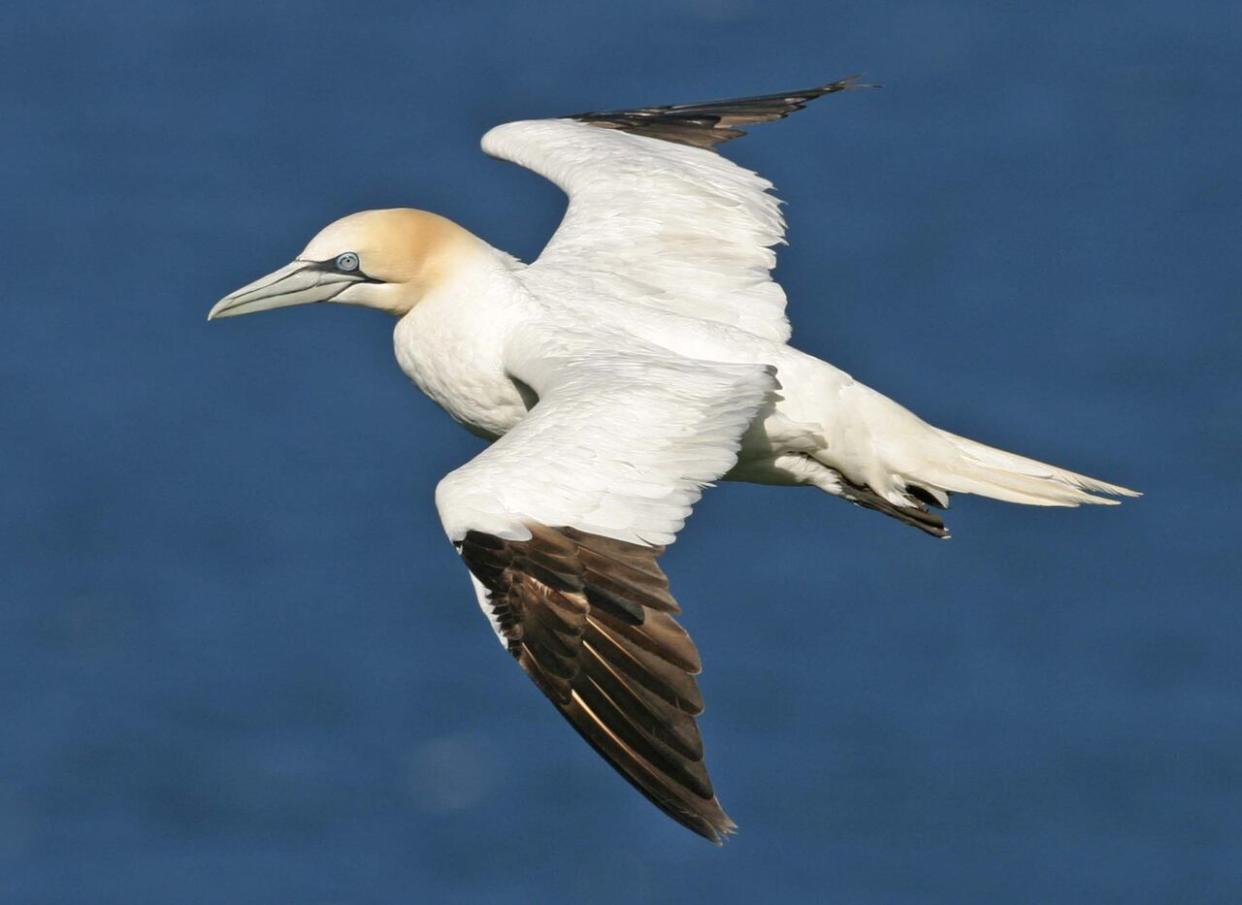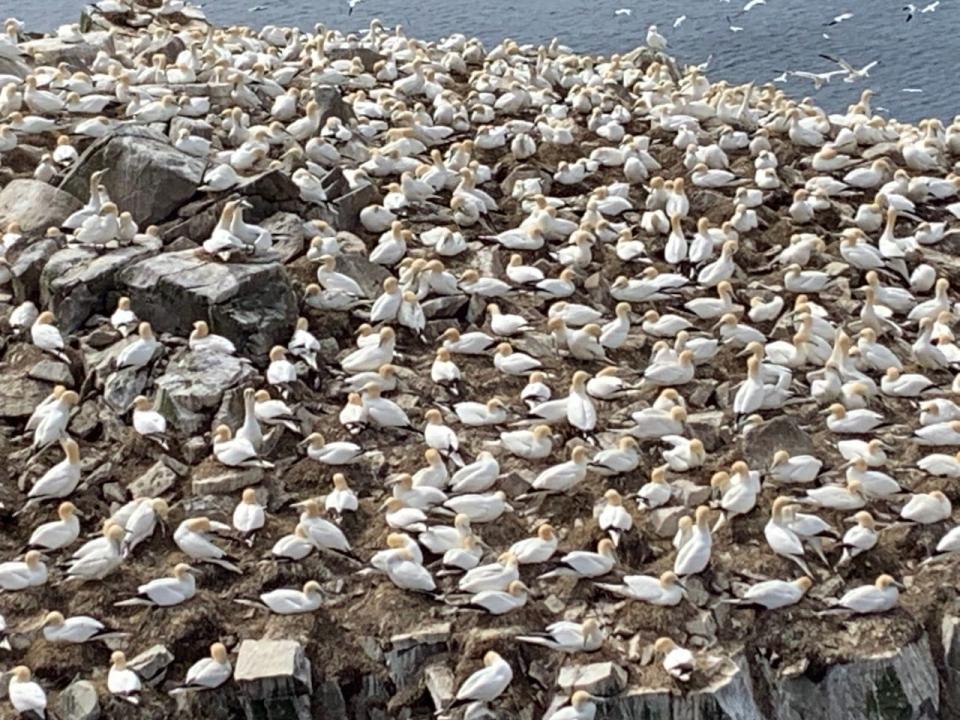Gannet population showing signs of recovery following avian flu die-off, researchers say

Signs of life at the Cape St. Mary's Ecological Reserve are raising hopes of recovery for Newfoundland and Labrador gannets, following a 2022 outbreak of avian flu that devastated North American populations.
More than 25,000 birds died as a result of avian flu in North America in 2022, gannet researcher Rebecca Wiseman told CBC News on Monday, including more than 6,600 birds in Newfoundland and Labrador.
"There was, like, a massive die-off, and then they weren't able to raise their chicks," Wiseman said. "The breeding success that year was only 17 per cent, while the average is usually around 60 per cent. So it was a big hit to the colony."
Noah Carreen, who is also researching gannets and lives near the reserve, said he's seen the impact of the loss first-hand.
"[Previously] you look out there and it's just like a big white rock. It's full of gannets, it's almost like there's snow on it. But now, there's all these empty patches and areas where previous nests have been," he said.
One of Wiseman's research colleagues, Sydney Collins, said the number of deaths equalled about 11 per cent of the current breeding population.
The deaths are especially significant due to gannets' longevity. Researchers expect it will take years to get back to close to where population numbers were previously.
"When you lose a breeding adult that means that you are losing a breeding pair, essentially. Because it takes two birds to raise one chick. You lose that adult, you are probably going to lose the chick. And then the bird that is left, if it didn't die, it now has to find a new pair," she said.

However, there are signs that indicate the process could already be starting.
Wiseman said last year's breeding success rate peaked at 72 per cent. Similar numbers could be coming this year, said Carreen, adding between 60 and 70 per cent of this year's nests have an egg in them.
That's especially surprising, Collins said, given adverse conditions last year thanks to rising temperatures affecting the spawning times of certain fish.
"We're still seeing this high breeding success, and so that's quite reassuring for population recovery," she said.
Collins said researchers are also exploring theories that the birds who survived the avian flu are stronger and better suited for breeding, which could affect success rates this year.
Careen said there are currently no signs of avian flu within the reserve, but carcasses that have been found at nearby beaches are being tested.
Download our free CBC News app to sign up for push alerts for CBC Newfoundland and Labrador. Click here to visit our landing page.


